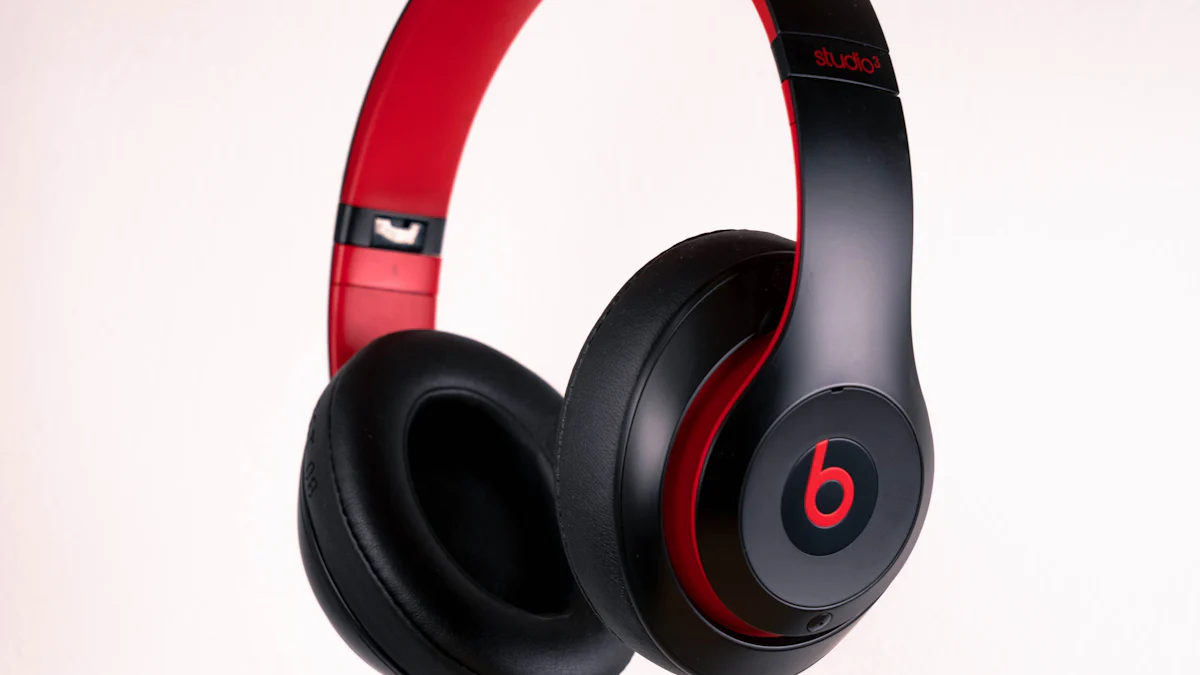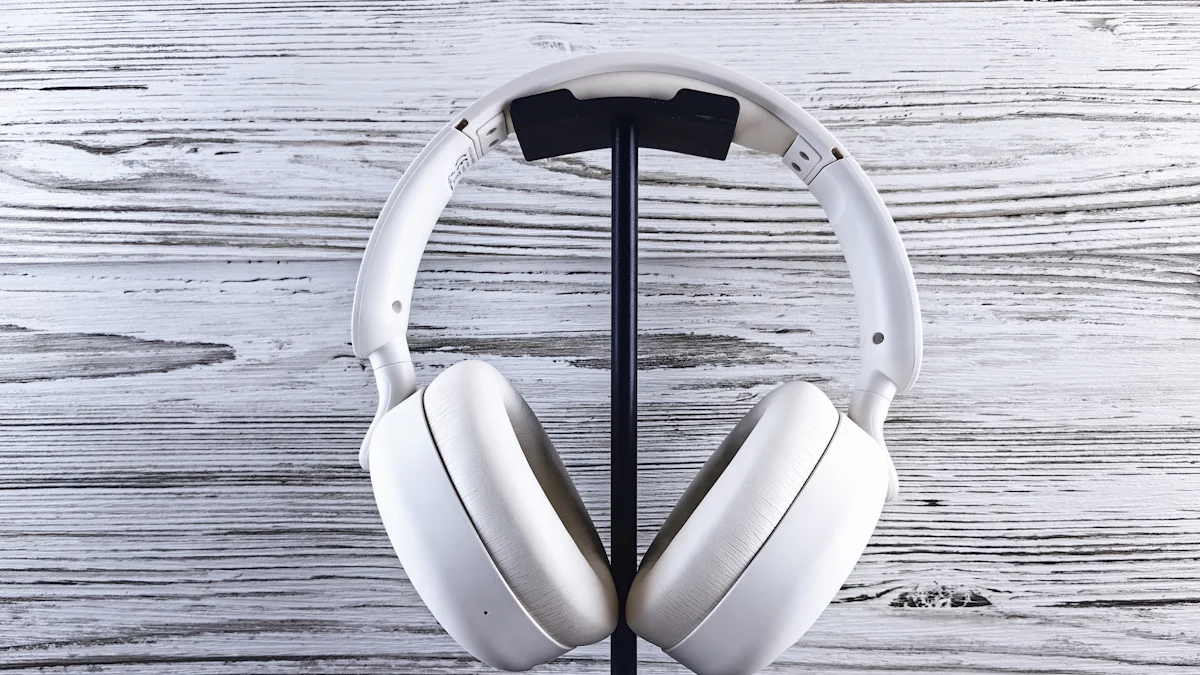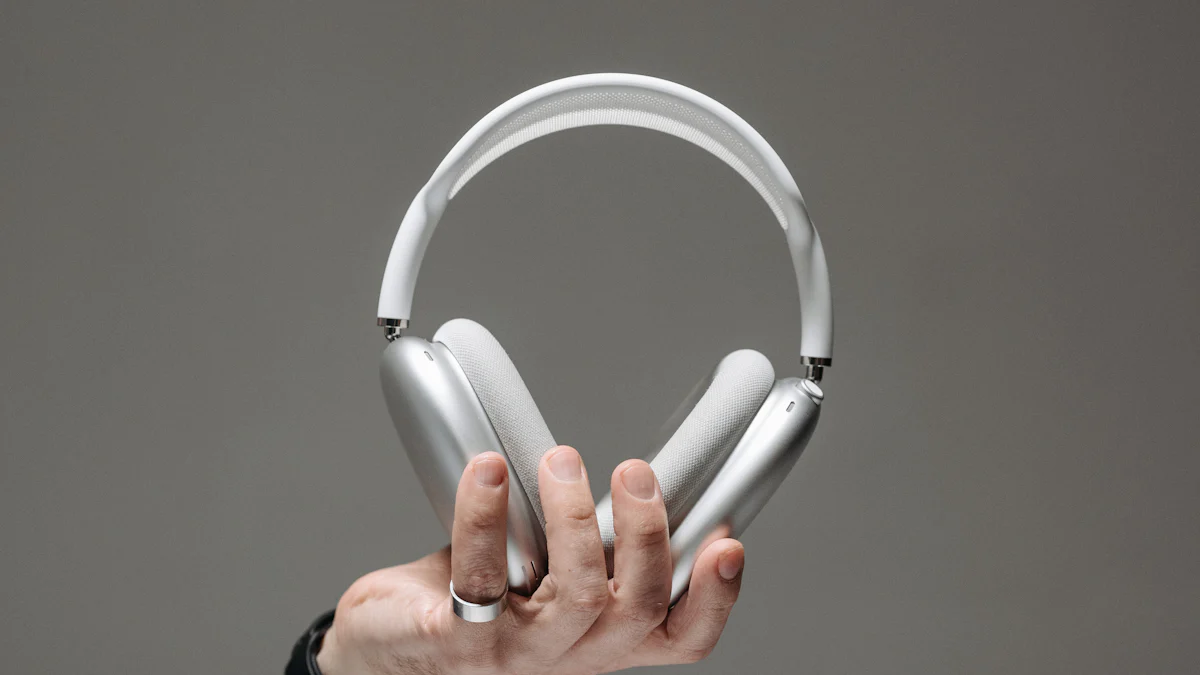What is Noise-Canceling Technology in Headsets?

Imagine you're on a bustling train or in a noisy office, trying to enjoy your favorite music or focus on an important call. That's where ANC, or Active Noise Cancellation, steps in. This technology in headphones helps you by reducing unwanted noise, allowing you to hear what truly matters. With ANC technology, you don't need to crank up the volume to drown out background noise. Instead, you can enjoy clear audio at comfortable levels. Whether you're using Bluetooth headphones or a noise-cancelling microphone headset for superior voice clarity in noisy spaces, ANC makes a world of difference. It enhances your listening experience by blocking out distractions, ensuring you stay connected to your audio content without interruptions.
How Does Noise Cancellation Technology Work?

Noise cancellation technology might sound like magic, but it's all about science. You might wonder how this technology can make such a difference in your listening experience. Let's dive into the basics and see how it works.
Understanding the Basics of Noise Cancellation
At its core, noise cancellation involves creating sound waves that counteract unwanted noise. This process is known as destructive interference. Imagine two waves in the ocean meeting each other. If they have the same height but opposite directions, they cancel each other out. That's exactly what happens with sound waves in ANC.
Here's how it works step-by-step:
- Detection: Tiny microphones in your headset pick up ambient sounds around you.
- Analysis: The headset's internal system analyzes these sounds to understand their frequency and amplitude.
- Anti-Noise Creation: The system then generates sound waves that are the exact opposite of the detected noise.
- Cancellation: These anti-noise waves meet the unwanted sound waves, canceling them out before they reach your ears.
This process drastically reduces the noise level, allowing you to enjoy clear audio without cranking up the volume. It's like having a personal sound engineer in your headset, constantly working to give you the best listening experience.
Importance of Noise-Canceling Technology in Headsets
You might ask, "Why is this technology so important?" Well, ANC isn't just about comfort; it's about enhancing your overall audio experience. Here are some reasons why you should consider it:
- Improved Focus: In noisy environments like offices or public transport, ANC helps you concentrate by blocking out distractions.
- Better Communication: During calls, ANC ensures that you hear and are heard clearly, making conversations smoother.
- Hearing Protection: By reducing the need to increase volume, ANC protects your ears from potential damage.
- Enhanced Audio Quality: With less background noise, you can enjoy music and podcasts with greater clarity and detail.
ANC technology has become a game-changer in the world of audio. Whether you're a frequent traveler, a busy professional, or just someone who loves high-quality sound, understanding how noise cancellation technology works can help you make informed choices about your audio gear.
Types of Noise Cancellation in Headsets
When you think about noise-cancelling technology, you might picture a serene bubble of silence amidst chaos. But how do these magical devices work? Let's explore the two main types of noise cancellation: Passive Noise and Active Noise Cancellation Technology.
Passive Noise Cancellation
How Passive Noise Cancellation Works
Passive Noise cancellation relies on physical barriers to block unwanted sound. Think of it like closing a door to muffle the noise from another room. Headphones and earbuds with this feature use materials like thick padding or snug-fitting designs to create a seal around your ears. This seal helps to block out ambient noise, providing a quieter listening environment.
Benefits and Limitations
Passive Noise cancellation offers several benefits:
- Simplicity: No batteries or electronics are needed. You just put on your headphones or earbuds, and they start working.
- Durability: Without electronic components, these devices tend to be more robust and less prone to technical issues.
- Cost-Effectiveness: Generally, passive noise cancelling devices are more affordable than their active counterparts.
However, there are limitations:
- Limited Effectiveness: Passive Noise cancellation works best for high-frequency sounds but struggles with low-frequency noises like engine hums.
- Comfort: The snug fit required for effective noise reduction can sometimes lead to discomfort during extended use.
Active Noise Cancellation Technology
How Active Noise Cancellation Works
Active Noise Cancellation Technology takes a more sophisticated approach. It uses built-in microphones to detect ambient noise. These microphones listen to the surrounding sounds and then produce anti-phase sound waves. This process, known as active noise reduction, cancels out incoming noise, providing a quieter listening experience.
Here's how active noise cancellation works step-by-step:
- Detection: Microphones pick up external sounds.
- Analysis: The system analyzes these sounds to understand their characteristics.
- Anti-Noise Creation: The device generates sound waves that are the opposite of the detected noise.
- Cancellation: These anti-noise waves meet the unwanted sound waves, effectively canceling them out.
This technology is a game-changer for environments with constant background noise, like airplanes or busy streets.
Benefits and Limitations
Active noise cancellation offers distinct advantages:
- Effective Noise Reduction: It excels at reducing low-frequency noises, making it ideal for travel or noisy workplaces.
- Enhanced Audio Quality: By minimizing background noise, you can enjoy clearer sound without increasing the volume. Enhanced Audio Quality
However, there are some drawbacks:
- Battery Dependency: Active noise cancelling devices require power, which means you'll need to recharge them regularly.
- Higher Cost: The technology involved makes these devices more expensive than passive noise cancelling options.
Exploring Types of Active Noise Cancellation
When you dive into the world of noise-cancelling technology, you'll find that not all ANC systems are created equal. Different types of ANC offer unique ways to tackle unwanted noise. Let's explore the three main types: Feedforward ANC, Feedback ANC, and Hybrid ANC.
Feedforward ANC
Feedforward ANC is like having a vigilant guard outside your headphones. This system places microphones on the outer part of the earpiece. These microphones detect ambient noise before it reaches your ears. The system then processes this information through ANC processing to create anti-noise signals. These signals effectively cancel out the detected noise, providing a quieter listening experience.
-
Advantages:
-
Proactive Noise Cancellation: By catching noise early, it can handle sudden changes in sound levels.
-
Effective for High Frequencies: It excels at reducing high-frequency sounds, making it ideal for environments with unpredictable noise.
-
Limitations:
-
Susceptible to Wind Noise: Because the microphones are exposed, wind can sometimes interfere with the noise-cancelling process.
-
Less Effective for Low Frequencies: It might struggle with low-frequency sounds like engine hums.
Feedback ANC
Feedback ANC takes a different approach. It places microphones inside the ear cup, closer to your ear. This setup allows the system to monitor the sound that actually reaches your ear. By doing so, it can make real-time adjustments to the anti-noise signals, ensuring effective noise cancellation.
-
Advantages:
-
Real-Time Adjustments: It continuously adapts to the noise environment, providing consistent noise reduction.
-
Effective for Low Frequencies: It excels at canceling out low-frequency sounds, making it perfect for steady noises like airplane engines.
-
Limitations:
-
Potential for Feedback Loop: If not properly designed, it can create a feedback loop, affecting sound quality.
-
Complexity: The system requires precise calibration, which can increase production costs.
Hybrid ANC
Hybrid ANC combines the best of both worlds. It uses both Feedforward and Feedback microphones to create a comprehensive noise-cancelling experience. This dual approach allows it to tackle a wide range of frequencies effectively.
-
Advantages:
-
Versatile Noise Cancellation: It handles both high and low frequencies well, making it suitable for various environments.
-
Balanced Performance: By combining two systems, it offers a more balanced and effective noise-cancelling experience.
-
Limitations:
-
Higher Cost: The complexity of combining two systems can make these headphones more expensive.
-
Increased Power Consumption: Running both systems simultaneously can drain the battery faster.
In the Evolution of ANC Technology, these ANC types have paved the way for more advanced and effective noise-cancelling solutions. Whether you're using earbuds or headphones, understanding these types can help you choose the right ANC system for your needs. With the right choice, you can enjoy a serene audio experience, free from the distractions of the outside world.
Active Vs. Passive Noise Cancellation

When it comes to choosing between active and passive noise cancellation, understanding the key differences can help you make an informed decision. Both methods aim to reduce unwanted noise, but they do so in distinct ways.
Key Differences
Active noise cancellation (ANC) uses technology to actively counteract noise. It employs microphones and speakers to detect ambient sounds and generate anti-noise signals that cancel out these sounds. This method is particularly effective in environments with constant low-frequency noises, like airplane engines or busy streets. ANC requires power, so you'll need to recharge your headphones regularly.
On the other hand, passive noise cancellation relies on the physical design and materials of the headphones to block out noise. Think of it as creating a barrier between your ears and the outside world. The shape and fit of the earcups or earbuds play a crucial role in how well they can reduce noise. Passive methods don't require power, making them more economical and easy to use without worrying about battery life.
"Active noise cancellation technology uses microphones and speakers to eliminate background noise, leaving only the desired audio," says Lauren Dragan, a renowned audio expert. This highlights the technological edge of ANC over passive methods.
Pros and Cons of Each Method
Let's break down the pros and cons of each method to help you decide which suits your needs best:
Active Noise Cancellation:
-
Pros:
-
Effective Noise Reduction: Excels at reducing low-frequency noises.
-
Enhanced Audio Quality: Allows you to enjoy clear sound without increasing volume.
-
Versatile: Suitable for various environments, from airplanes to bustling streets.
-
Cons:
-
Battery Dependency: Requires regular charging.
-
Higher Cost: Typically more expensive due to the technology involved.
Passive Noise Cancellation:
-
Pros:
-
Simplicity: No need for batteries or electronics.
-
Durability: Less prone to technical issues.
-
Cost-Effective: Generally more affordable than ANC options.
-
Cons:
-
Limited Effectiveness: Struggles with low-frequency noises.
-
Comfort: Snug fit can lead to discomfort during extended use.
Lauren Dragan emphasizes that "passive noise cancellation relies on materials and design to block out unwanted sounds." This approach makes passive methods more straightforward but less adaptable to varying noise environments.
Depending on your needs, you might prefer the technological prowess of ANC or the simplicity and affordability of passive noise cancellation. If you're an audiophile who values sound quality, you might lean towards ANC, as it enhances the listening experience by minimizing background noise. However, if you prioritize comfort and cost, passive noise cancellation could be the way to go.
In the world of headphones, brands like JBL Tour and Jabra offer models with both active and passive noise cancellation features. Whether you're using Bluetooth headphones that sound great or audiophile headphones that focus on delivering superior audio, understanding these differences can guide you in selecting the right pair for your lifestyle.
Choosing the Right Headset for Your Needs
Selecting the perfect headset can feel overwhelming with so many options available. But don't worry, I've got you covered. Let's break down the key factors to consider and explore some recommendations based on your specific needs.
Factors to Consider
When choosing a headset, you should focus on several important aspects:
-
Purpose: Determine what you'll primarily use the headset for. Are you looking for something to enhance your music experience, or do you need a noise-cancelling microphone headset for superior voice clarity in noisy spaces? Knowing your primary use will guide your choice.
-
Comfort: Comfort is crucial, especially if you plan to wear your headset for extended periods. Look for adjustable headbands and cushioned ear cups. Over-ear Bluetooth headphones sound great and often provide a comfortable fit.
-
Connectivity: Decide between Bluetooth headphones and Wired Earbuds. Bluetooth Wireless Headphones offer freedom from cables, while Wired Earbuds can provide a more stable connection without worrying about battery life.
-
Noise Cancellation: If you frequently find yourself in noisy environments, consider headsets with ANC headphones technology. This feature can significantly enhance your listening experience by reducing background noise.
-
Budget: Set a budget that aligns with your needs. While high-end models offer advanced features, there are also affordable options that deliver excellent performance.
A noise-cancelling microphone headset can be a game-changer for superior voice clarity in noisy spaces. Whether you're working in a bustling office or traveling, these headsets help you stay focused and stress-free.
